Geography of Argentina
Argentina is a large country located in South America. It has an area of approximately 1,073,500 square miles. Its topography includes the Andes Mountains in the west, the southern Patagonian Ice Field, and flat plains extending eastward into the Atlantic Ocean.
Argentina’s climate ranges from subtropical in the north to temperate in central regions to arid or humid subtropical climates in some areas. Its geography also features fertile soil for agriculture along with many major rivers, such as Rio de la Plata, which flows through much of eastern Argentina. The country also has numerous lakes and glaciers across its diverse landscape.

Argentina’s topography includes the southern Patagonian Ice Field.
©natkom/Shutterstock.com
People and Culture
The people of Argentina are a diverse mix, with influences from Europe, the Middle East, and other Latin American countries. The culture is an eclectic blend of those various heritages as well as the indigenous peoples that have lived in the area for centuries. This blending can be seen in everything from language to cuisine to music.
Argentine cuisine has been heavily influenced by Italian and Spanish cooking styles due to immigration from these regions during the 19th century. Commonly prepared dishes include empanadas, locro (a stew made with white corn), and choripan (sausage sandwiches). These meals often feature beef or lamb seasoned with herbs such as oregano, parsley, bay leaves, cumin, paprika, garlic powder, onion powder, and chili flakes. Sweet treats like alfajores (dulce de leche-filled cookies) are also popular throughout Argentina.
Native Plants
In addition to the national flower of Argentina, the ceibo, there are a variety of native plants that grow wild in this South American country. Examples include the yerba mate plant, which is a shrub used to make tea-like beverages, and various species of orchids. Argentina is home to several types of cacti, such as the Argentine giant cactus and columnar cacti. Other native flora includes evergreen trees like ombús and palo borrachos, as well as an array of flowering shrubs, including guayacanes and chañares. Additionally, grasses like pampas grass can be found growing throughout Argentina’s natural environment.
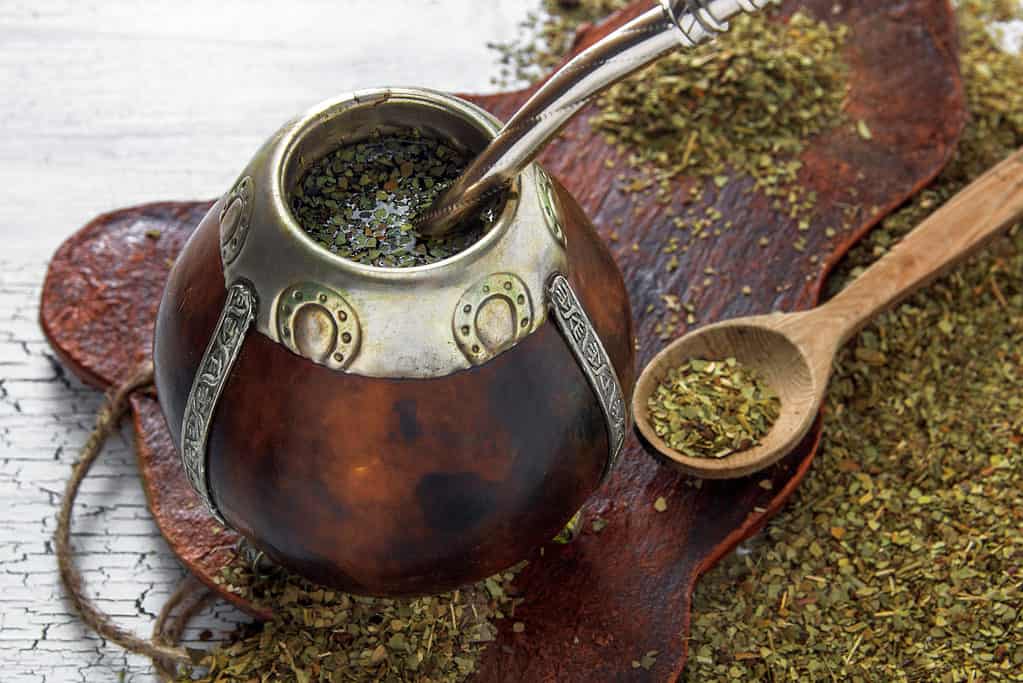
The yerba mate plant is native to Argentina and is used to make tea-like beverages.
©Shaposhnikova Anna/Shutterstock.com
National Flower
The national flower of Argentina is the ceibo or Erythrina crista-galli. It is a flowering tree native to South America that can grow up to 33 feet tall. The red flowers bloom from October to April in their native South American region.
On December 2, 1942, the ceibo was designated as the national flower of Argentina. This recognition was due to its importance to Argentine culture, as well as its abundance in the northern regions of the nation, such as Salta, Santa Fe, and Buenos Aires. Every year on November 22, the National Day of the Flower is celebrated in honor of the ceibo tree’s flowers.
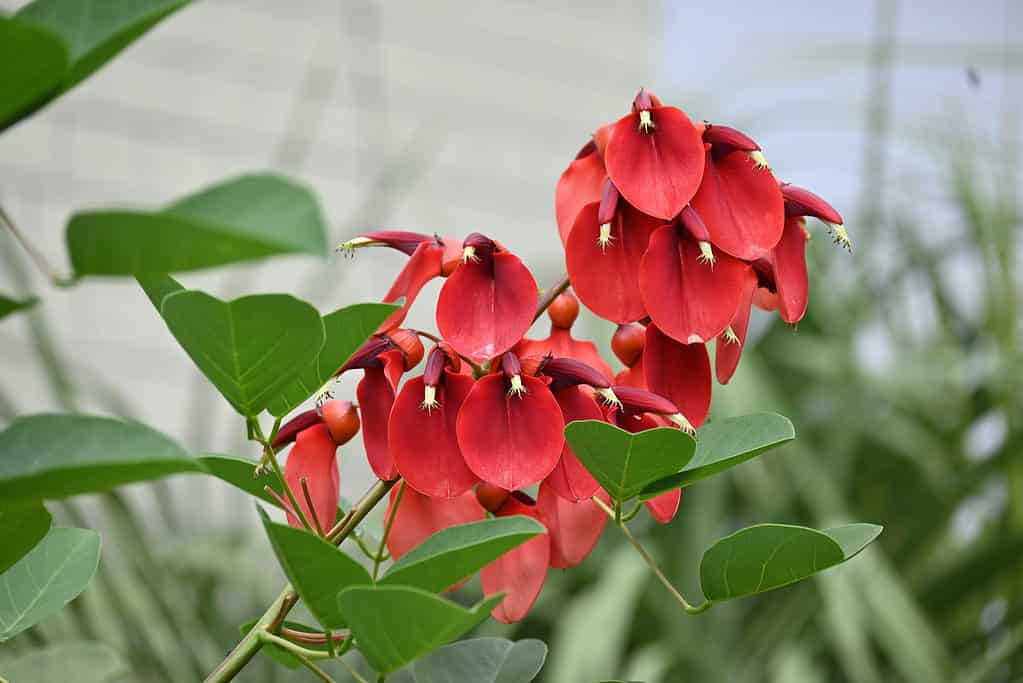
The national flower of Argentina is the ceibo or
Erythrina crista-galli, a flowering tree native to South America that can grow up to 33 feet tall.
©iStock.com/ndefined undefined
What is Ceibo?
Erythrina crista-galli, also called the cockspur coral tree, is a beautiful and vibrant flowering tree belonging to the pea family. The tree is native to Argentina. It also grows in Uruguay, Brazil, and Paraguay and is planted in gardens and streets across California due to its attractive blooms.
It produces clusters of bright red flowers with yellow stamens appearing at the end of branches during late winter or early spring. Once pollinated by insects such as bees and butterflies, these flowers turn into distinctive seedpods that remain on the tree for several months before releasing their seeds when they mature. The bark of this species is also quite remarkable. It has a rough texture with prominent vertical fissures giving it an almost spiky appearance which makes it stand out from other trees in any landscape.
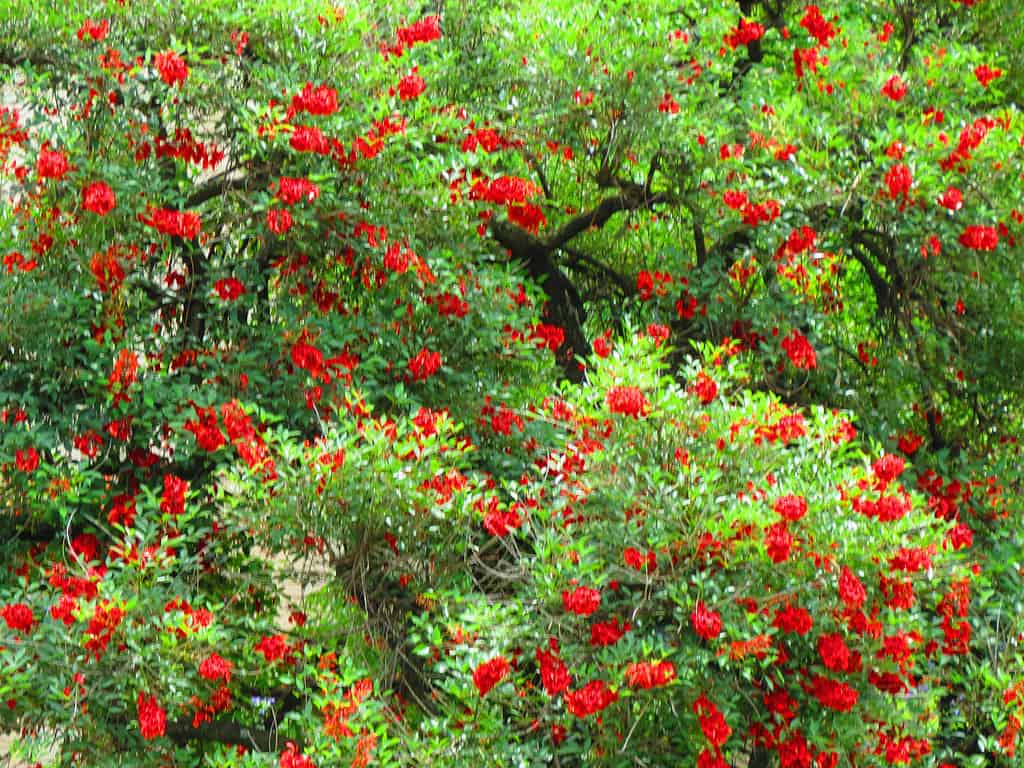
, also called the cockspur coral tree, is a beautiful and vibrant flowering tree belonging to the pea family.
©iStock.com/Natalia SO
Common Names
The ceibo is an iconic symbol of Argentina, and its presence across South America has earned it several common names. In Spanish-speaking countries, the tree is known as ceibo or seíbo. In Portuguese-speaking countries, it’s called corticeira. Elsewhere around the region, bucaré is a less common name. The Latin-specific epithet crista-galli translates to “cock’s comb” in English, giving rise to another nickname, the cockspur coral tree. This unique name comes from the shape of the bright red flowers which adorn this majestic species.
Myth and Legend
The cockspur coral tree has been featured prominently in Argentine literature, tales, and traditional stories. One of the most renowned is about Anahí, a youth of indigenous descent seized by the Spanish conquistadores. When she attempted to escape, she killed her captor but was still tracked down in the forest and given the death sentence of being tied to a tree and set alight.
When the people returned to where the woman had been, they found a cockspur coral tree instead. According to the story, its shiny leaves and velvet-like red blooms took the place of her body and served as a reminder of courage and power in the face of difficulty.
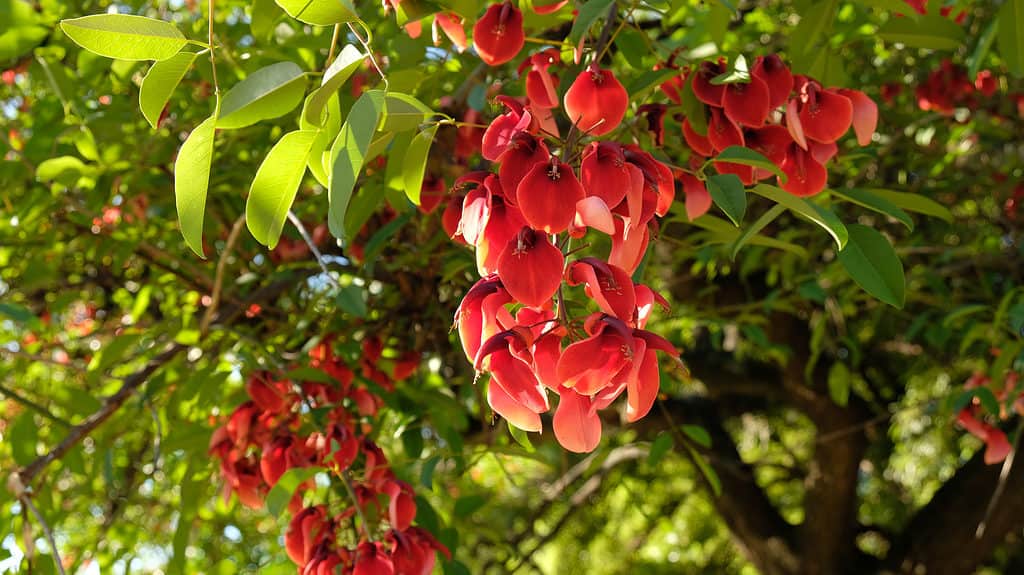
The cockspur coral tree (ceibo) has been featured prominently in Argentine literature, tales, and traditional stories.
©iStock.com/From_South
How to Grow
Growing a ceibo tree is relatively easy and can be done in most climates with the right conditions. It thrives outside in USDA Hardiness Zones 9-11. If you live outside of these zones, you can grow it in a pot to take inside for winter. It will also grow happily in a large greenhouse.
The best way to start is to buy a young sapling from a nursery or online supplier. Plant it in well-draining, nutrient-rich soil that receives plenty of sun throughout the day. Make sure you plant it at least 10 feet away from other trees or structures so that it has enough room for growth as they reach heights up to 33 feet tall and 10-15 feet wide!
Keep an eye on water levels and ensure your ceibo gets regular watering but not too much. If planted correctly, they are quite drought-tolerant once established. Pruning may also be necessary depending on how you want your ceibo to look. Cutting back dead or diseased branches will help keep them healthy and encourage new growth.
Benefits to Wildlife
The ceibo tree is a vital habitat for many wildlife species, providing shelter and sustenance through its nectar-rich flowers. Insects and hummingbirds are both attracted to these flowers as they offer an excellent source of nutrition. The pollen from the ceibo flower helps to support biodiversity by helping pollinators move between different plants, aiding in cross-pollination and seed production. Additionally, some local bird species use the leaves, bark, and branches of ceibo trees to build their nests.
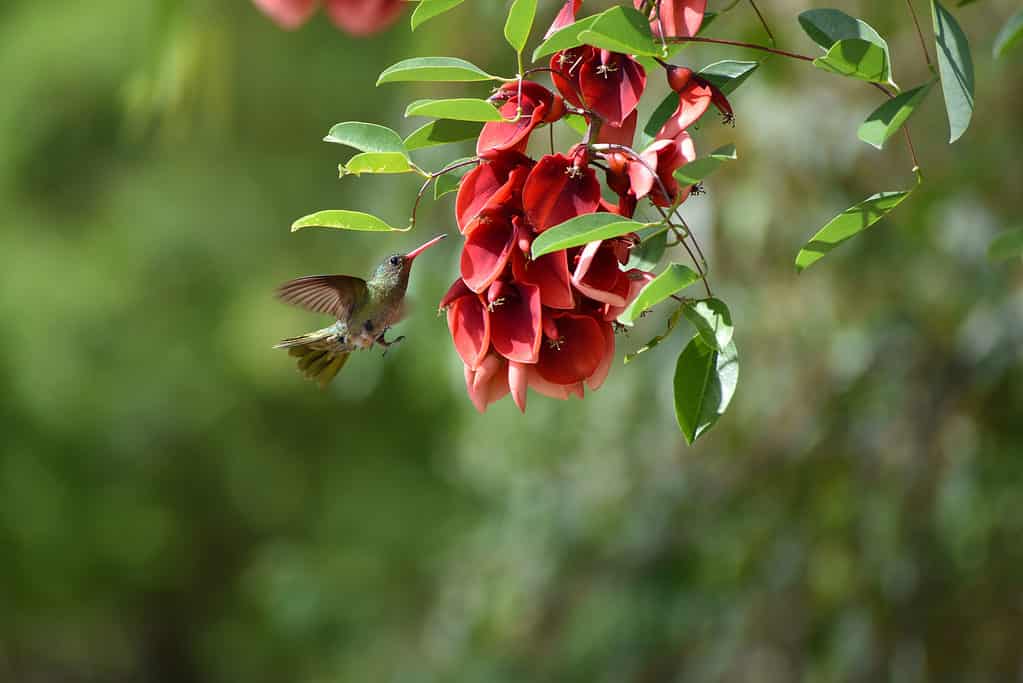
Hummingbirds are attracted to ceibo flowers as they offer an excellent source of nutrition.
©iStock.com/Christian Peters
Wild Animals
Argentina is home to a wide variety of wild animals. Some of these include cougars, pumas, jaguars, foxes, and coyotes in the north. You can see guanacos, vicuñas, llamas, and alpacas in the south. Argentina is home to various species of monkeys, including capuchin, and birds like parrots and toucans. If you like reptiles, you can see iguanas and anacondas in Argentina and aquatic creatures like dolphins.
Additionally, many endangered species live within Argentina’s borders, including giant anteaters and maned wolves. With its diverse habitats ranging from tropical rainforests to grasslands to deserts, it’s no wonder that so many unique animals can be found throughout this wondrous country!
Wild Flowers
The jacaranda tree is a well-known and distinctive sight in Argentina due to its beautiful purple blossoms, which bloom in the springtime. This tree is native to the subtropical regions of South America and is often seen adorning the main thoroughfares of Buenos Aires and other cities throughout the country.
Other native flowers that are commonly seen in Argentina include dahlias, hibiscus, morning glory, pampas grass, marigold, and verbena. All these flowers bring vibrant colors to their environment and make for some stunningly picturesque views!

The jacaranda tree is a well-known and distinctive sight in Argentina due to its beautiful purple blossoms.
©Rinelle/Shutterstock.com
Up Next
Thank you for reading! Have some feedback for us? Contact the AZ Animals editorial team.








